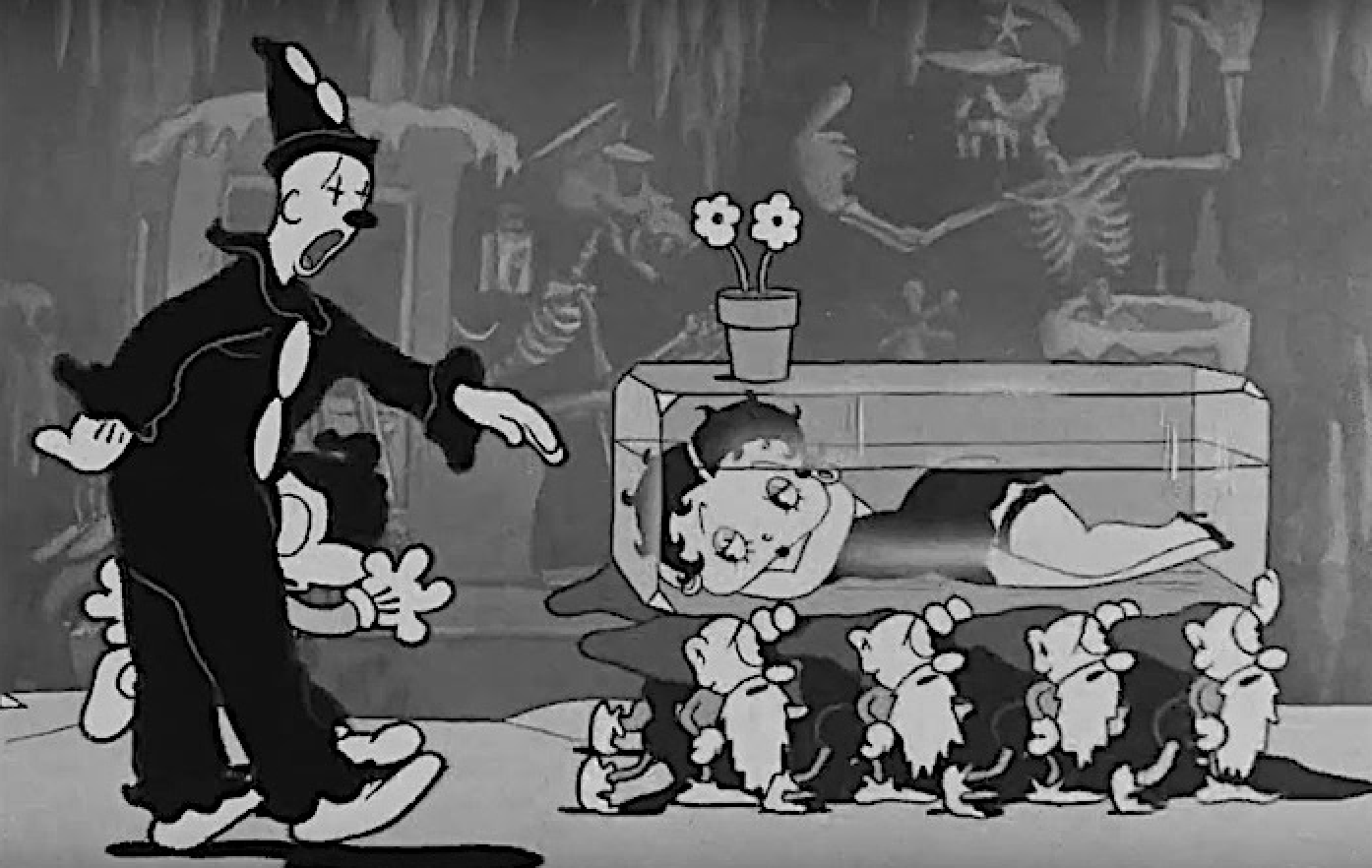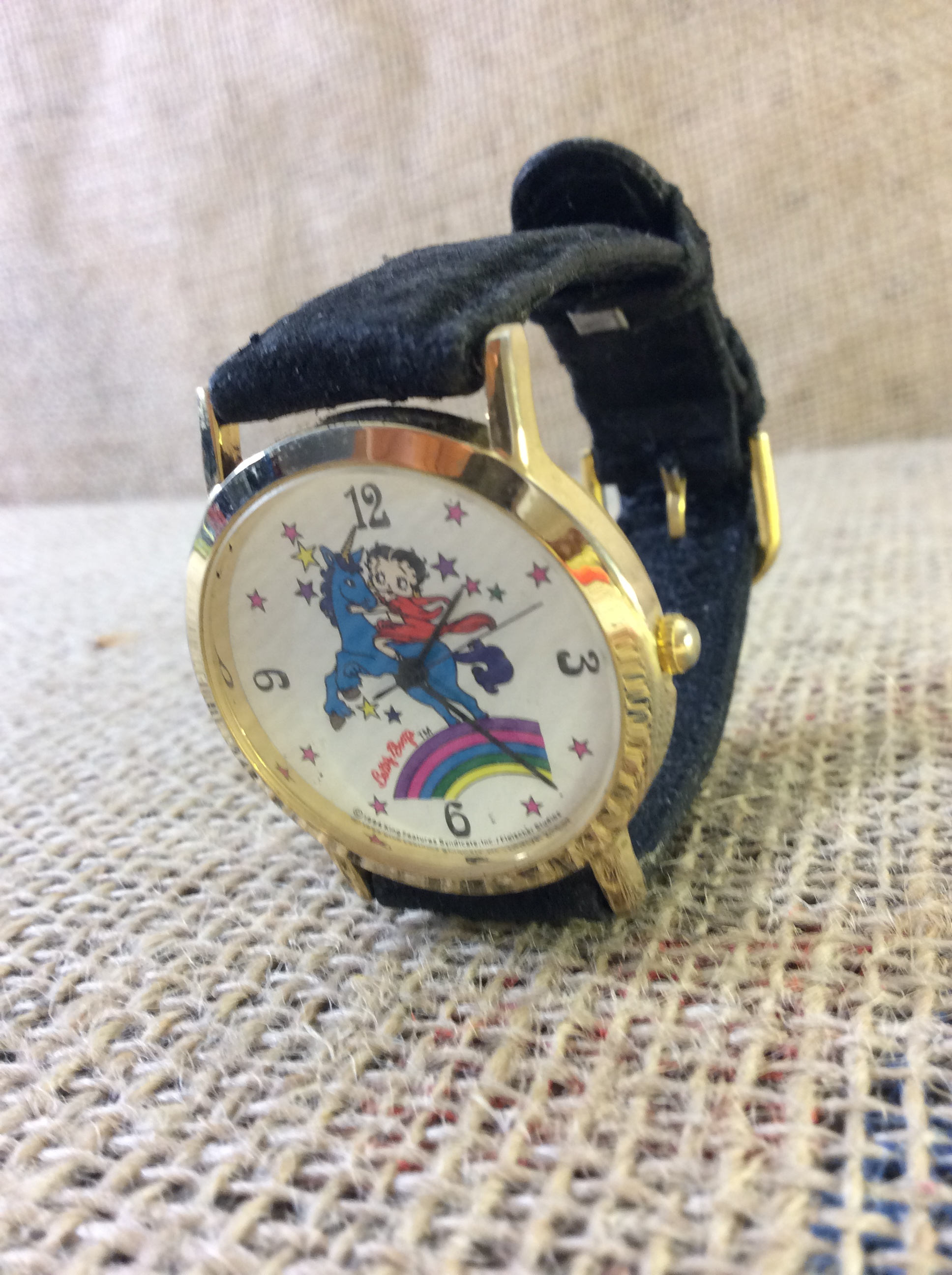

A truly heteromorphic life form, the Betty Boop cartoon embodies a kind of dream state. That is to say, we never doubt Betty's return home – and one sincerely doubts that a home resplendent with a fatherly talking clock would be any more rational than Blunderland, where the laws of logic and physics respectively no longer apply. After falling down an unfeasibly long shaft and swigging a flagon of “shrink-ola”, the true Fleischer magic begins – and as with his many other works, it is not the end but the means that comprises the magic of the piece.

Betty, curious as always, meanders laconically into the mirror after the hare, whereupon she transforms into a long-haired maiden and begins her lackadaisical trip though Blunderland. Suitably placated singing her way through the placement of the pieces making up the march hare on the board before her, she eventually comes across the head, which promptly joins its body and leaps from the board. Betty in Blunderland is one such hallucinatory outing a short, sharp shock laced with Fleischer's whimsical, though at times suppositious touches.īetty Boop is stretched out on her living room floor, assembling a Wonderland jigsaw puzzle. Ranging from the whimsical, almost improvisatory imaginings of the patriarchal Max Fleischer, through to the post-Code shorts in which Betty was stripped of her curves and attitude, Betty Boop cartoons always have, at heart, a fearlessly inventive nucleus – in the blink of an eye, the everyday can (and usually does) morph into the unreal.
BETTY BOOP WATCH CODE
This trademark routine begins another surreal foray into the unknown for Betty, who (at least before the Hays Code began to tyrannise Hollywood for the “good” of public morals) embodied the quintessential spirit of the burgeoning jazz era.

The opening shot of Betty in Blunderland shows our mesmeric heroine peeking mischievously from her curtain-sheathed hiding place she winks, and delivers her now infamous, trademark “boop-oop-a-doop” spiel, which was propagated further by Marilyn Monroe's indelibly ditzy number in Some Like it Hot (Billy Wilder, 1959). She is, however, mentioned in many documentaries and books about the Harlem Renaissance, and her legendary way of singing does live on in the iconic Betty Boop character.An essay by Paul Verhoeven on "Betty in Blunderland". During her entire career, she was mostly only known locally in the New York City area, and she reportedly died at a very young age.

In fact, she never even really achieved mainstream success. Meanwhile, the very woman who inspired the character, Baby Esther, was never compensated in any way. It's estimated that the Betty Boop franchise generated millions of dollars in revenue from televison networks and sales of merchandise. But soon after, she was transformed into a white woman and remained so until her character was finally retired. She appeared in at least one animated scene in the popular Popeye The Sailor Man series. Initially, Betty Boop was shown in cartoons as an African American woman. That very same style was heavily imitated by the Betty Boop animated character. Her stage name was "Baby Esther", but unfortunately, when her character become the first and most famous sex symbol in animation she was whitewashed with most people having no idea where the original inspiration came from.īaby Esther had a popular cabaret act at the infamous Cotton Club in Harlem, New York where she sang with a unique vocal style that featured “boop-boop-a-doops” and other similar scat sounds. PBS has confirmed that Betty Boop, the popular cartoon character introduced to the world by cartoonist Max Fleischer in 1930, was actually inspired by a real-life African American jazz singer and entertainer from Harlem named Esther Jones.


 0 kommentar(er)
0 kommentar(er)
